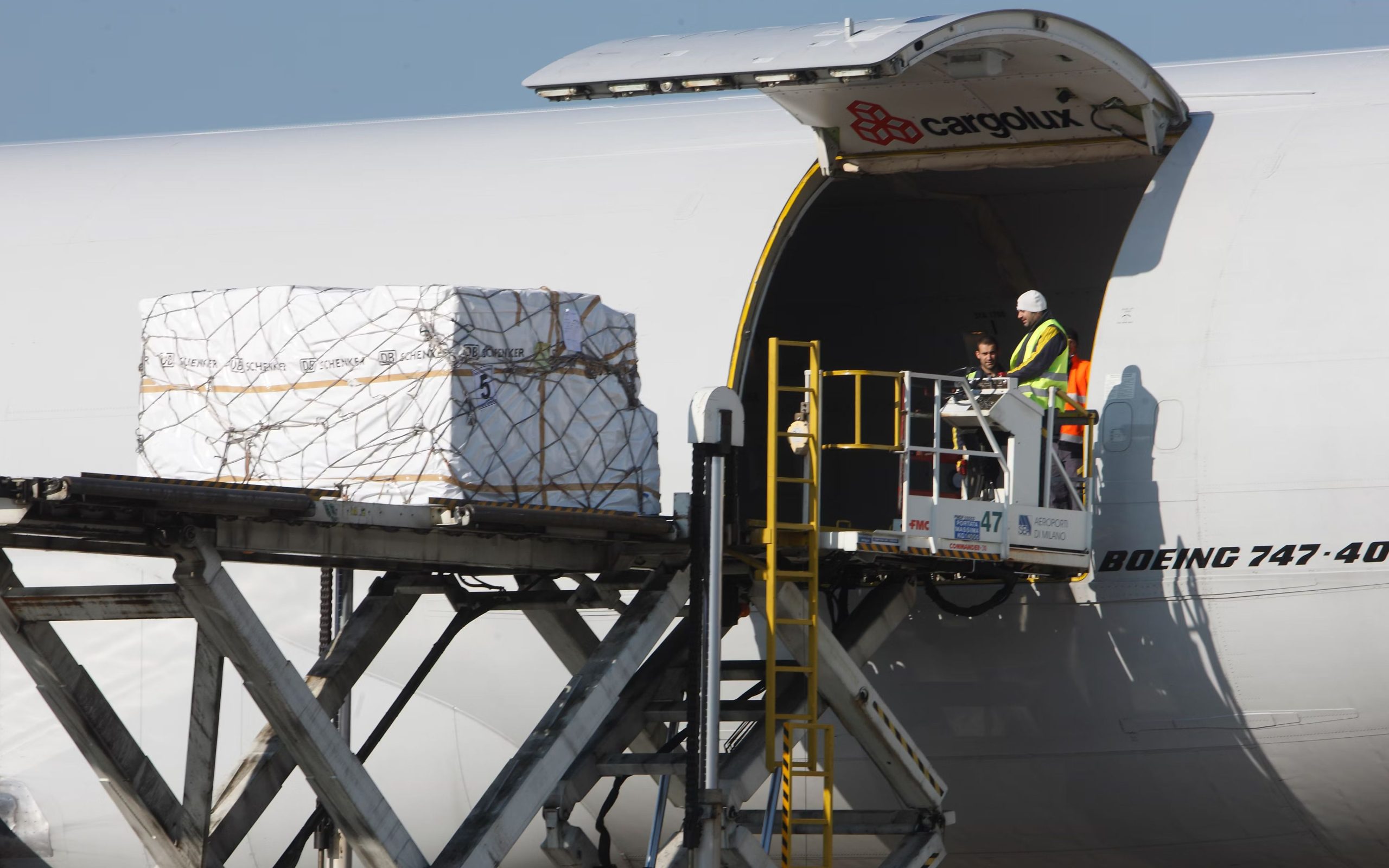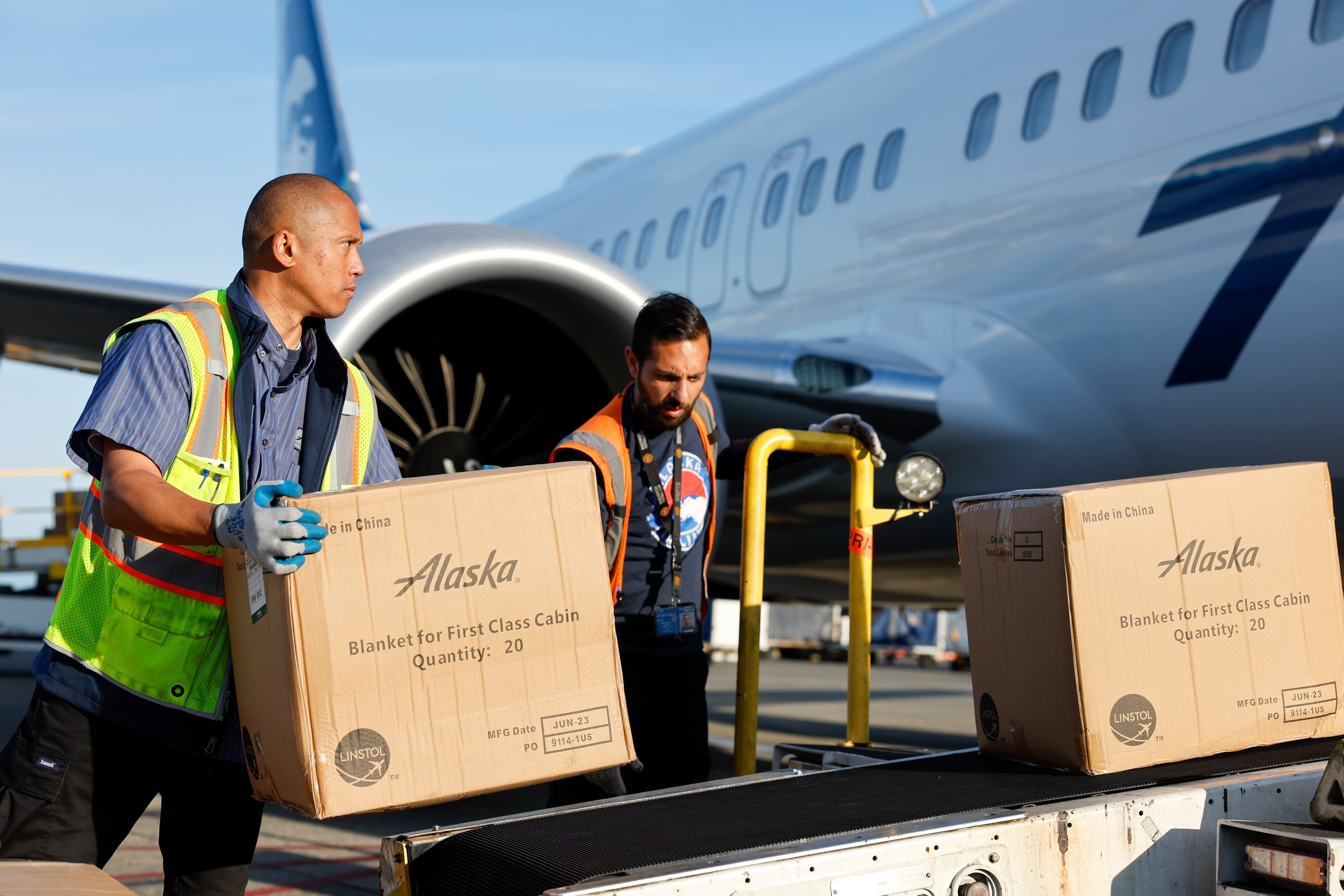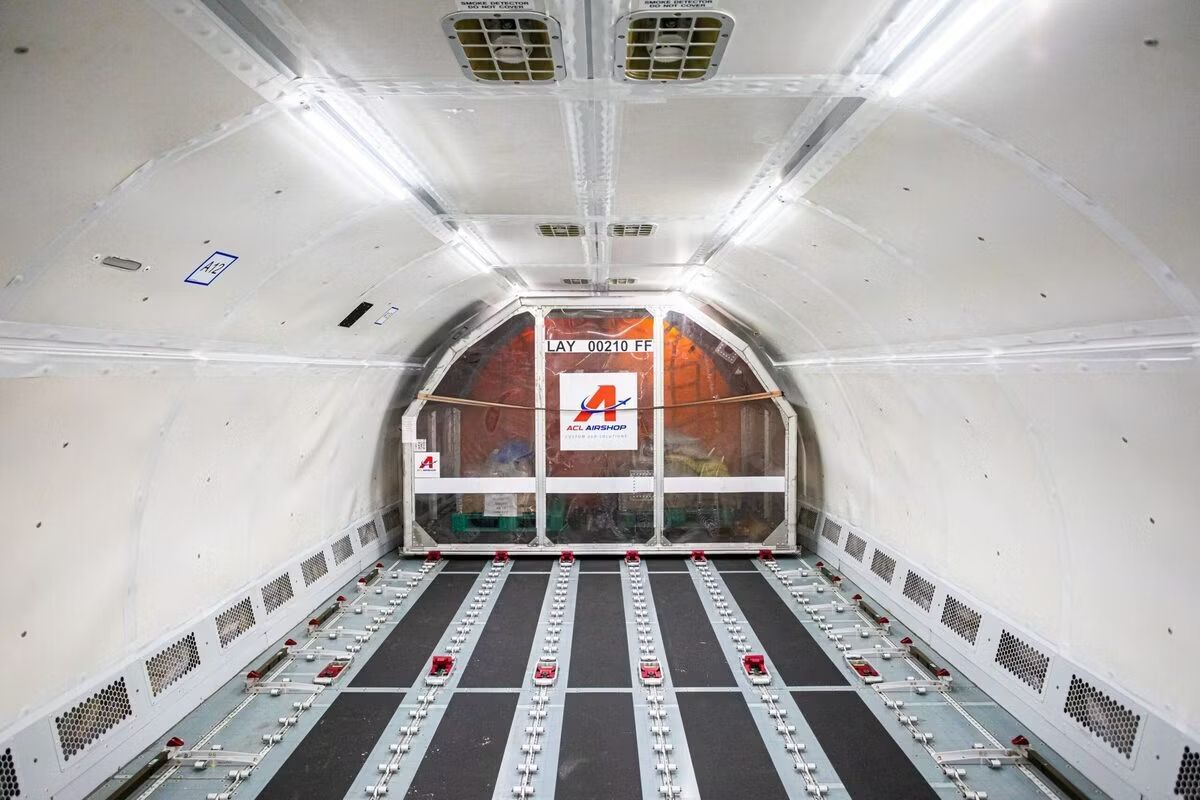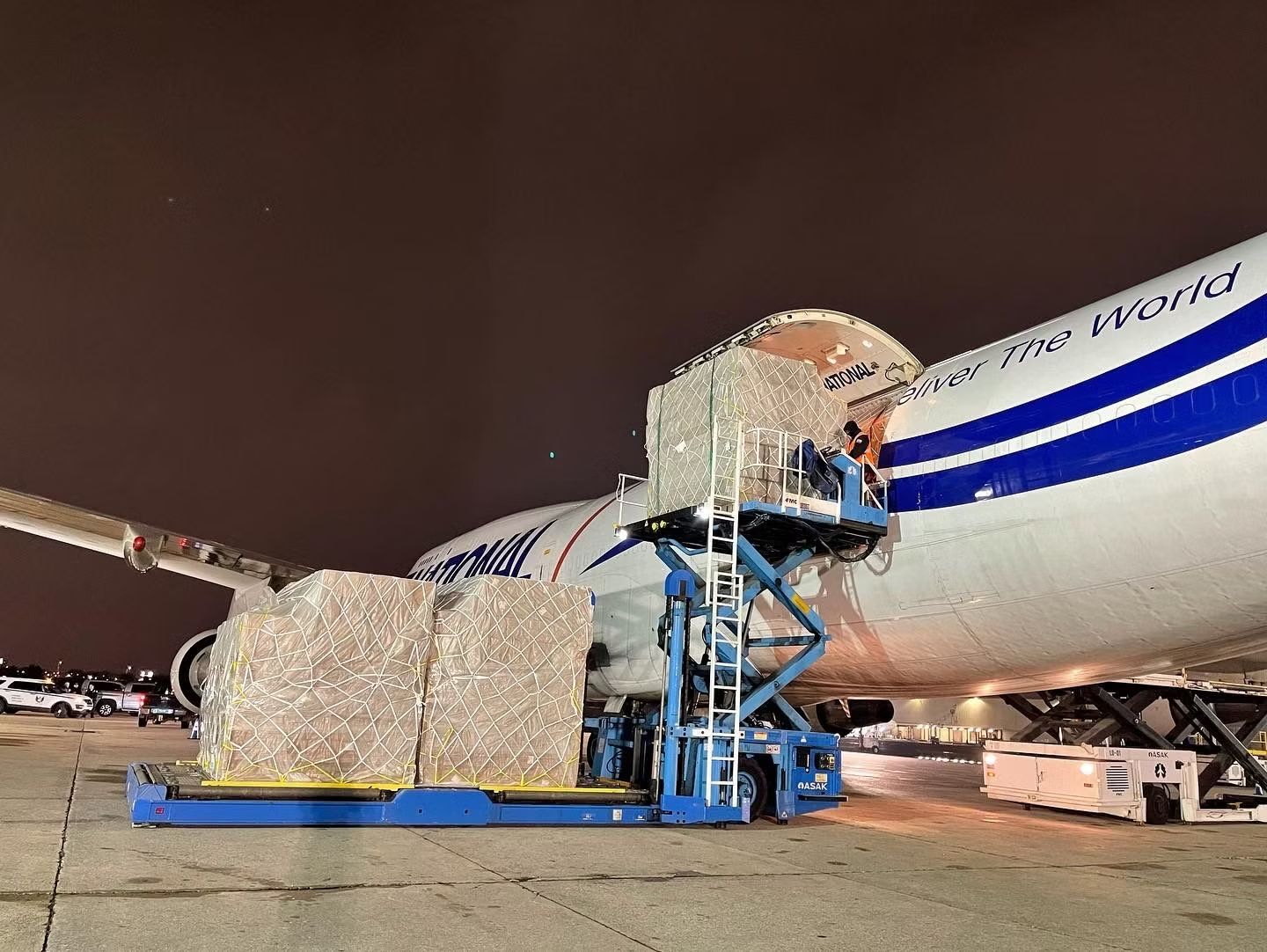Summary
- Cargo must be adequately secured to avoid dangerous inflight movement.
- Cargo securing varies depending on aircraft type, cargo weight, and size.
- The use of unit load devices is becoming more common to place and secure cargo efficiently.
In order for the safe operation of air freight transport, proper measures must be undertaken to secure cargo properly within an aircraft hold (if utilizing a passenger aircraft) or on a freighter’s primary cargo bed. If cargo becomes loose during flight, this can lead to dangerous inflight movement, damaging an aircraft’s fuselage and even putting a plane in critical danger. Most commonly, inappropriate placement and securing of cargo can force aircraft to overshoot the runway during either takeoff or landing.
Photo: Alaska Airlines
Unsurprisingly, how specifically cargo must be secured varies heavily by aircraft type, cargo weight, and size. Furthermore, specific arrangements also vary between purpose-built freighters and passenger aircraft with cargo in their holds. In this article, we’ll explore the variety of unique ways in which cargo can be loaded and placed within an airplane to ensure its safe transportation and lack of movement during flight.
The bulk loading technique
Traditionally, the bulk loading technique is employed on most passenger aircraft and some narrowbody freighters. In this method, cargo (which is primarily in the form of bags or small packages) is placed in an even layer across the hold, as is required to ensure an appropriate balance of weight within the aircraft.
Due to the even layer, cargo usually remains relatively in place throughout the course of a flight. When one thinks of bags being loaded under a passenger deck, the bulk loading technique is typically employed.
Photo: Airbus
Usually, bulk loading is done by trailers or small loading vehicles that transport bags (or other cargo) from the check-in area (or other processing facility) to the aircraft. Then, workers will begin to load the baggage individually, using an identifier to denote the first and last bag in the set. With non-luggage cargo, a similar system is utilized.
Unit load devices
However, as the air freight industry continues to evolve, newer techniques have begun to be adopted. Now, most widebody aircraft and some dedicated narrowbody freighters have started using unit load devices to more efficiently place cargo onboard an aircraft and secure it in place.
Unit load devices operate similarly to containers onboard a ship and act as a way to more efficiently prevent freight from moving around during flight. These containers can also be easily secured by fasteners built onto the floor of an aircraft’s fuselage.
Photo: National Airlines
There are some downsides, however, of using unit load devices instead of traditional bulk packing. For example, hydraulic lifting machines are used to raise the unit load devices, which can be expensive to operate. Additionally, ULDs can be large, making it difficult for them to be loaded onto aircraft without large cargo doors.
Unique situations
Specific restrictions can apply for certain kinds of cargo, and an entirely different type of aircraft can be required in particular situations. Boeing’s Dreamlifter and Airbus’s Beluga XL are jets built to carry oversized cargo, including large aircraft parts. The Antonov An-225 Mriya, the largest aircraft ever built, was also specifically designed to handle uniquely large cargo.
Source: SKYBrary




